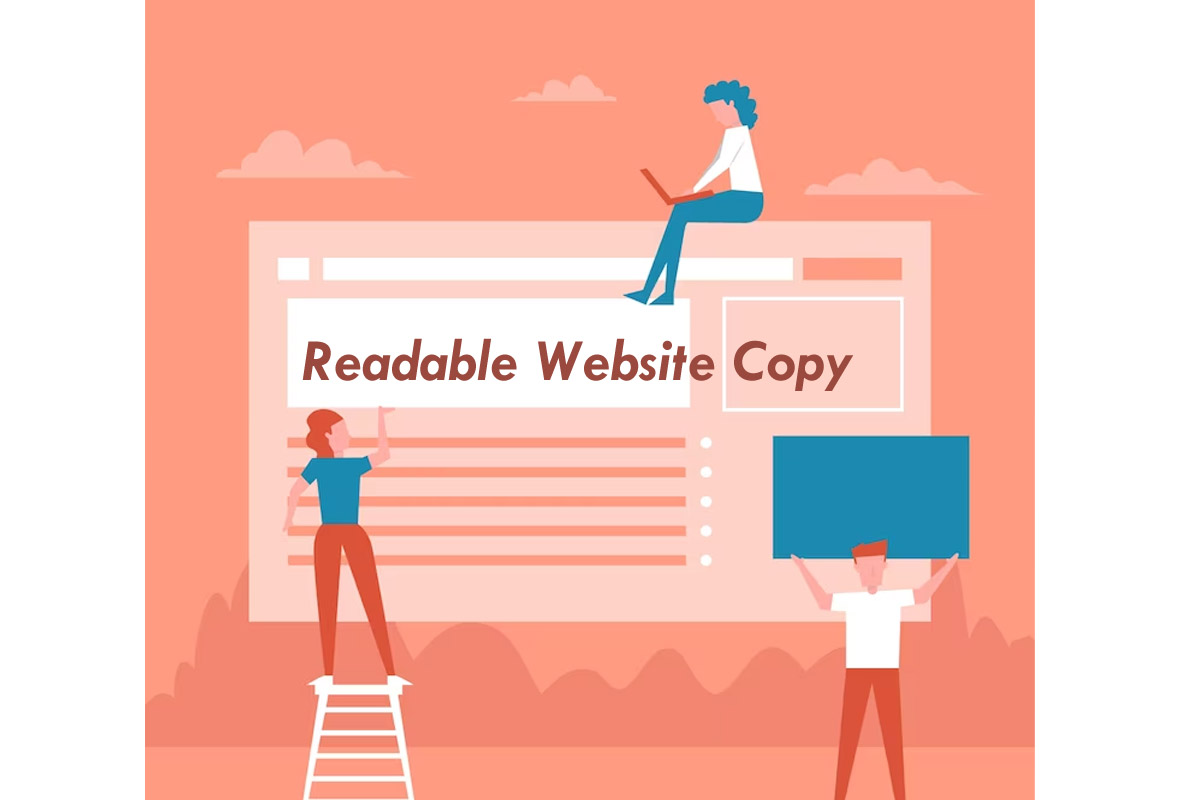Readable Website Copy
Creating readable website copy is crucial for engaging your audience and conveying your message effectively. Here are some tricks to make your website copy more readable. Remember to consider your target audience, their reading habits, and their needs when creating readable website copy.
Here is what you can do to test if your website is readable. Test your website with real users, and gathering feedback can also help identify areas for improvement and ensure your document is as readable as possible.
How to Tackle Readable Website Copy?
Sections:
Write in a straightforward and easy-to-understand manner. Avoid using complex terms, or overly technical language unless your target audience understands explicitly and expects it. Keep sentences and paragraphs concise and to the point.
It would be best to have headings and subheadings to break down the content into logical sections. This helps readers quickly scan the page and find the information they want. Use descriptive and engaging headings that give readers an idea of what each section covers.
Listing:
You use bullet points or numbered lists when presenting lists or critical issues. This format helps readers hold information more quickly and enhances readability. It also makes your content more scannable, which is especially important for online readers.
White space, or the distance between text and other elements, is crucial for readability. It allows readers to concentrate on the content without feeling overwhelmed. Ensure enough spacing between paragraphs, headings, and images to create a visually balanced layout.
Readability and Engagement:
Visual elements can enhance readability and engagement. Include relevant images and other graphics that accompany your content and provide visual interest. Images can also help break up long stretches of text, making it more appealing to read.
Fonts and Color:
Choose fonts that easily read on various devices and screen sizes. Stick to standard web-safe fonts or use web fonts designed for legibility. Also, ensure that the font size is large enough to be comfortably read without strain, particularly on mobile devices.
Make sure that there is enough contrast between the text color and the background color. Avoid using light-colored text on a light or dark-colored text on a dark background, as it can make reading difficult. High contrast makes your text more readable and accessible.
Proper spacing between lines and paragraphs improves readability. Increase the line spacing slightly to make the text more legible, and leave adequate white space between paragraphs to give readers a visual break.
Testing the Website: Readable Website Copy
Always check and edit your website copy to remove typos, grammatical errors, and bumpy phrasing. Bad-quality content can diminish the readability and professionalism of your website. Once you have done everything needed for your website, you need to track how it is doing.
Some tools or plugins will help track from grammatical mistakes to languages and more. And if any usability issues occur, you can find out and maintain your website. It would help if you did this manually too. You can’t just rely on tools to do the checking. Doing it manually will give you more insights into how your website is performing.
Make your CTAs clear and easy to spot. Use contrasting colors and straightforward language, and place them strategically to encourage readers to take action. CTAs help guide readers and clarify what steps they should take next.
Elements of Readable Website Copy
Readable website copy ensures that information is quickly available to a huge range of audiences, including individuals with varying literacy, language proficiency, or cognitive abilities. It eliminates barriers to understanding and promotes inclusivity.
By presenting content clearly, concisely, and engagingly, readable website copy captures visitors’ interest, encouraging them to stay on the website longer, explore further, and interact with the provided information or offerings.
Well-structured and readable copy enables information reclamation for users. It uses headings, subheadings, and bulleted lists to highlight key points, making it easier for readers to scan and locate the information they seek.
Readable website copy takes into account search engine optimization (SEO) principles. Incorporating relevant keywords naturally into the content helps improve search engine rankings, making the website more discoverable to potential visitors.
When the copy is clear, concise, and well-written, it enhances the credibility of the website and the brand it represents. High-quality, readable content creates a positive impression, inspires trust in the audience, and positions the company as an authority in its area.
Eventually, readable website copy aims to guide visitors towards desired actions, such as purchasing, filling out a form, or subscribing to a newsletter. Deliberately placing persuasive and compelling calls to action throughout the copy increases the probability of conversion.
Conclusion
Businesses can effectively transfer their message, enhance user experience, and increase website engagement and conversions by creating readable website copy. If you follow the above guidelines for readable website copy, your website grows faster than when you don’t.

